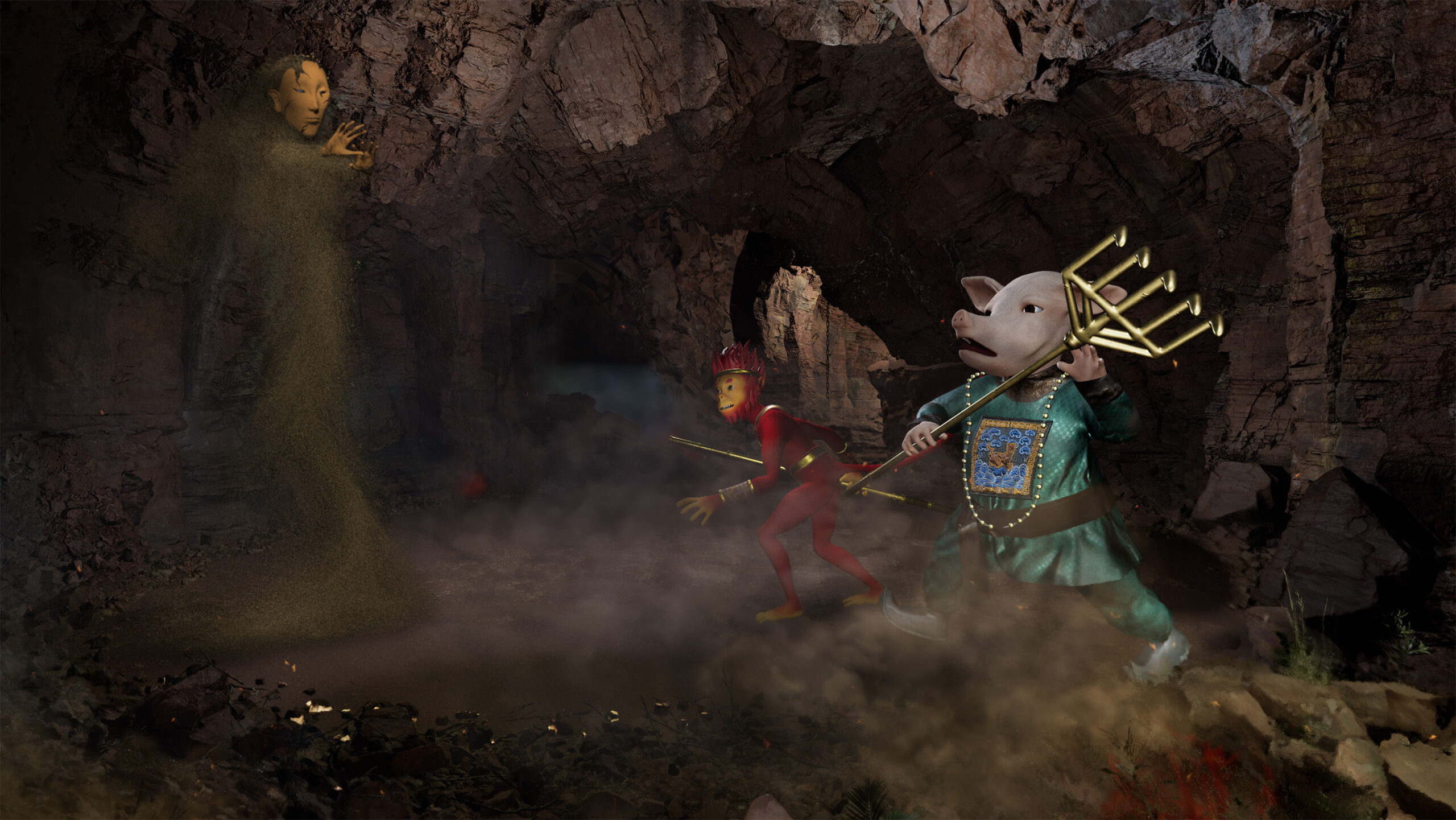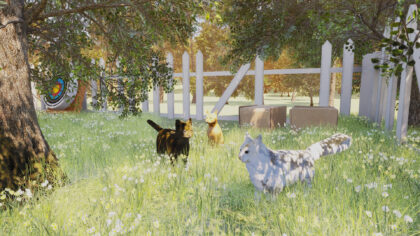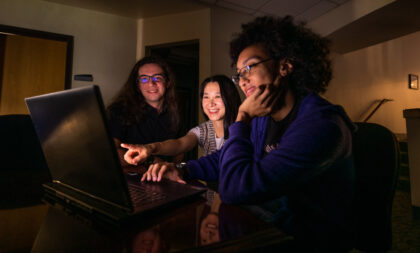From gaming to guiding

Becker School of Design & Technology Professor Mengliu Lu ’22, MFA ’23, discovered a passion for 3D design during childhood. Her love for gaming laid the groundwork for a career that fuses creativity and technology.
After honing her skills in Becker’s MFA program, which is ranked No. 7 in the world by the Princeton Review, Lu channeled her creative enthusiasm into her new role at the front of the classroom. Lu draws from her experiences as a Clark alumna and multimedia designer to teach the elective Storytelling Through Characters, guiding students in crafting 3D game characters with rich, narrative-driven backstories.
Outside of Clark, Lu has refined her craft working with White Snake Projects, an innovative opera company that creates multimedia performances. She’s contributed to acclaimed productions such as “Cosmic Cowboy,” “Fractured Mosaics,” and “Monkey.”
ClarkNow caught up with Lu to discuss her creative journey and what she hopes to inspire in her students. The following Q&A is edited for length and clarity.

What sparked your passion for 3D art, and how did you start developing your skills in this medium?
My passion for 3D art was ignited by my love for drawing and games as a child. I was captivated by the art and soundtrack of the game “Onmyoji,” and the characters’ stories deeply resonated with me, which made me want to create beautiful characters of my own. Later, “Red Dead Redemption 2” inspired my pursuit of a more realistic art style, focusing on depth and immersion. This motivated me to take an introductory class in Maya, a software used to create assets for interactive 3D applications, but I quickly realized I needed more comprehensive training.
You chose to come to Clark University twice, first as a student and now as a faculty member. What aspects of Clark drew you back, and how did you transition from student to professor?
Clark University has always felt like a place where I belong. As a student, I received tremendous support and care from my professors and the department. The sense of community and the nurturing environment at Clark left a lasting impression on me. When the opportunity arose to return as a faculty member, I saw it as a chance to give back the love and support I had received. My familiarity with the culture, curriculum, and expectations of the institution helps me prepare my students for success within Clark’s specific academic environment
Are there specific experiences from your time at Clark that shape how you teach?
It is an ongoing process. I draw upon my positive experiences as a student to inform my teaching methods.
Professor Ulm’s passion inspired me during my time as a student, and her curiosity, enthusiasm, and support exemplified the kind of educator I aspired to become. Her integration of new interactive media art and cutting-edge technology into her classes showed me the importance of staying current and innovative in this rapidly evolving field. Her trust in me was crucial as I started my teaching career — it boosted my confidence and motivated me to live up to the high standards set by my mentors at Clark.
Professor Ezra Cove‘s classes also had a significant impact on me. I learned the value of providing detailed, constructive feedback to help students improve their work. My experience as a student also shapes how I approach critiques in my own classes, ensuring that I acknowledge students’ efforts and make them feel seen and appreciated.

How has working on “Cosmic Cowboy” and other productions like “Fractured Mosaics” and “Monkey” for White Snake Projects influenced your creative approach, and how do you use these experiences to inspire your students?
Working on these projects has been transformative for my creative approach. Prior, I had primarily worked on serious and educational games, which, while fulfilling, often had limitations on creativity due to their specific goals and concepts.
White Snake Projects offered me unprecedented creative freedom in designing models. This experience taught me the importance of storytelling in 3D art, especially in character creation.
These experiences inspired me to create a new elective class called Storytelling Through Characters. This course explores character development and storytelling in character design and animation, teaching students to create 3D game characters deeply rooted in their unique stories. It covers various aspects including costume design, rigging for body and facial animations, and integrating art assets into gaming environments. I encourage my students to push their creative boundaries and understand the importance of narrative in visual design.
How did your experience with 3D art in the context of video games translate to a performance medium like opera?
Transitioning from video game 3D art to digital opera was an intriguing challenge that revealed surprising overlaps between these seemingly disparate art forms. Both rely heavily on visual storytelling and character development, which are core strengths I’ve developed in my game art career. In video games, characters need to be believable and engaging within an interactive environment. Similarly, in digital opera, the 3D characters must convey emotion and narrative in a way that complements the music and libretto. The need for expressive character design and animation is crucial in both contexts.
One surprising overlap was the importance of optimization. In games, we optimize assets for real-time rendering. In digital opera, we need to ensure the 3D elements can be rendered smoothly alongside the live-performance elements. The main difference is in the narrative structure. Games often have branching narratives, while operas follow a linear story. However, the skills of creating visually compelling characters and environments translated well between the two mediums.

How do you encourage students to blend their unique perspectives with the technical aspects of 3D art? How crucial do you think personal expression is in mastering this medium?
Personal expression is essential in mastering 3D art, as it distinguishes an artist and brings life to their work. To encourage this, I assign open-ended projects that balance creativity with technical skills and urge students to draw inspiration from their experiences, cultural backgrounds, and interests. I teach the importance of storytelling, as seen in my Storytelling Through Characters course, and provide opportunities for students to reflect on the meaning behind their choices. Exposing them to diverse artists and emphasizing technical proficiency serves their self-expression. I aim to develop both skilled 3D artists and creative thinkers.
What would tell prospective game and interactive media design students who don’t know where to start?
Play a wide variety of games and sample interactive experiences. Analyze what you like or dislike about them and try to understand the design choices behind these elements.
Engage with online communities of game developers and designers. Platforms like Discord, Reddit, or game jams can provide support, feedback, and inspiration.
Start documenting your work, no matter how small. A portfolio showcasing your progress can be valuable for future opportunities.
Game and interactive media design involves various disciplines. Don’t be afraid to explore areas like writing, music, and psychology.


